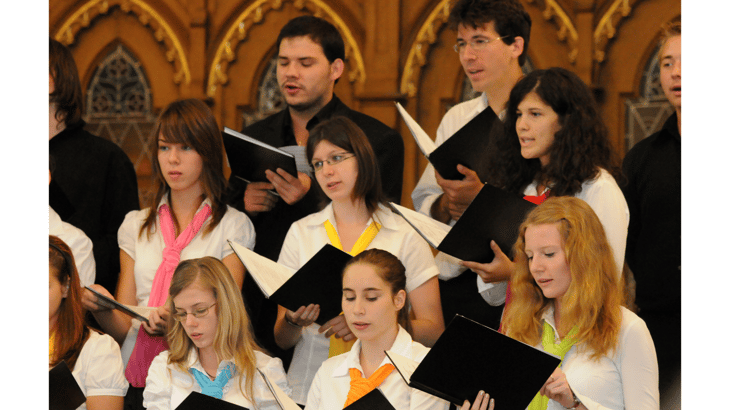Top String Music Settings for the Church Year
String instruments bring a rich depth and emotional beauty to worship. Whether supporting congregational singing, accompanying the choir, or offering reflective meditations, strings can illuminate the story of salvation as it unfolds throughout the Church Year. From the anticipation of Advent to the joy of Easter and the meditative moments of Communion, sacred string music helps the church express both reverence and rejoicing. Continue reading to discover a variety of works for string ensembles, both classic and fresh, that enhance worship with musical excellence and theological depth.
Why Do We Have One- and Three-Year Lectionaries?
Yes, what we look forward to this coming Sunday morning really does come down to us through millennia. This blog post, adapted from Carl C. Fickenscher II’s book Looking Forward to Sunday Morning: Reflections on the Church Year, outlines the history of the lectionary so you can see how each Sunday service is passed down to you today.
Top Children’s Hymns for Every Season of the Church Year
We sing what we love. We love what we know. And much of what we know and love we learned in childhood. This is especially true of hymns and songs that are impressed on our minds and hearts early and stay with us throughout our lives. It is imperative, therefore, that we give our children the very best hymns and songs of the church. Learn how you can use One and All Rejoice for every season of the Church Year.
Awaiting the Resurrection: Fixing Our Eyes on Jesus
Saints are well-known figures in Church history. While you might not personally know every saint, their commitment to the faith and contributions are understood by their titles. Just as the saints who have come before us, we wait for the beauty of the final days and celebrate in the resurrection. Read an excerpt below from Lutheran Service Book: Companion to the Services to understand more about how we can rejoice with the saints of both the past and present.
Fasting and Feasting on Music
I still remember my first Easter at my current church. In the lead up to that glorious day, we stopped singing the Gloria in Excelsis for Lent. As we drew closer to Good Friday, we stopped singing even more of the songs in the liturgy. Then, on Easter Sunday, after the pastor chanted “Glory be to God on high,” the entire congregation burst forth with “and on earth peace, goodwill toward men” like the music of the angels accompanied by an organ. The return of the Gloria provided great joy that Easter Sunday.
Themes in the Season of Lent
To mark the first day of Lent, we’re sharing an excerpt from Heaven on Earth in which Arthur Just describes the theological accents in the season of Lent.
Music, the Church Year, Repeat
“Repetition is the mother of all learning.”
This is a common saying, especially in education. The exhortation to repeat, repeat, repeat hopefully is prevalent in our Lutheran schools. Only through repetition does one learn and retain something. You are only reading this right now because someone drilled you on your ABCs and phonograms. In music, we drill note names and scales and rhythms.
How the Season after Pentecost Illustrates the Life of the Church
After the festivals of Pentecost and the Holy Trinity, the Church begins its longest yet perhaps least-celebrated season of the Church Year: the season after Pentecost. What comes at the end of the post-Pentecost calendar is not one of the Church’s grand festivals, but rather, a reminder that the end times are near. In this way, the season after Pentecost reflects the Church’s life as faithful members in Christ.

.jpg?width=50&height=50&name=IMG_20220621_160541_456%20(1).jpg)



















